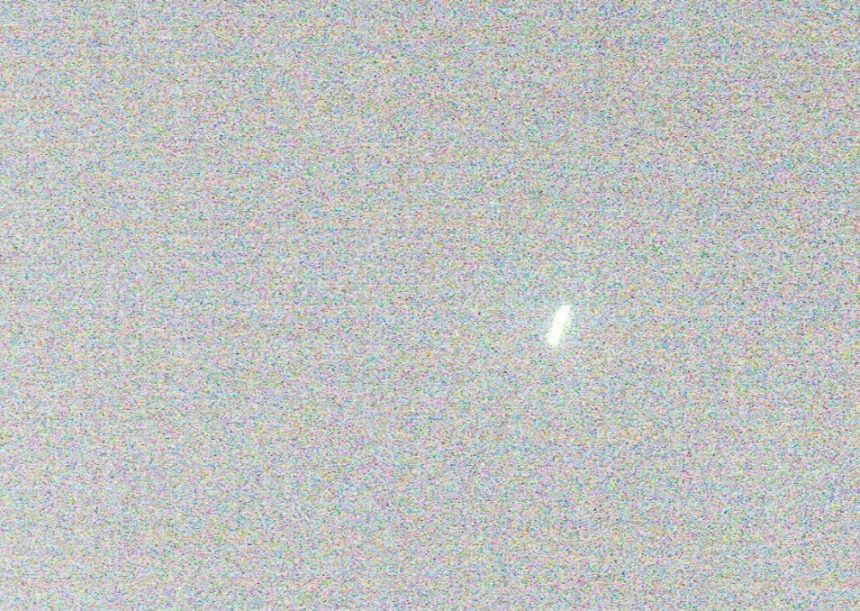Interstellar Visitor 3I/ATLAS Captured Passing Mars – NASA and ESA Race to Study Rare Cosmic Wanderer
A rare elysian event is unfolding in the skies near Mars as scientists from NASA and the European Space Agency( ESA) track an astral object known as 3I/ ATLAS, a mysterious body now sweeping through our Solar System on its way toward the Sun.
The object, believed to be a comet, is only the third verified astral caller ever detected in our cosmic neighbourhood.
Its appearance has touched off a transnational trouble to observe and record every possible detail before it disappears into deep space once again.
First discovered in July, 3I/ATLAS has been identified as an object that originated beyond our Solar System.
Unlike ordinary comets, its path is hyperbolic, meaning it is not bound by the Sun’s gravity and will eventually continue into interstellar space.
Researchers believe studying this “cosmic traveller” could reveal vital clues about the formation of planetary systems beyond our own, and even help uncover secrets of the early galaxy.
NASA’s Perseverance May Have Caught a Glimpse
As 3I/ATLAS passed within 23.6 million miles of Mars, NASA’s Perseverance rover may have captured an image of it streaking through the Martian sky.
The rover’s right navigation camera recorded a long, faint trail of light, estimated to stretch about 31,000 miles when compiled from hundreds of short exposures taken over ten minutes.
Harvard astronomer Avi Loeb commented on the finding, saying the comet itself is “much smaller than the 31,000-mile streak might suggest,” indicating that the light trail was largely caused by motion blur rather than the object’s actual size.
NASA has yet to officially confirm whether the bright streak is indeed an interstellar object, but scientists are optimistic.
ESA’s Mars Orbiters Join the Chase
Not to be outdone, the European Space Agency has redirected two of its Mars orbiters to capture images and spectral data as 3I/ATLAS makes its closest approach.
“Though our Mars orbiters continue to make impressive contributions to Mars science, it’s always extra exciting to see them responding to unexpected situations like this one,” said Colin Wilson, ESA project scientist for the Mars orbiters.
“I look forward to seeing what the data reveals following further analysis,” he added.
ESA reported that its ExoMars Trace Gas Orbiter managed to secure a sequence of high-resolution digital images as the comet passed within 18.64 million miles of its instruments, offering what could be the clearest view yet.
☄️ #3I/ATLAS comet update!
On 3 October, our ExoMars Trace Gas Orbiter (TGO) turned its eyes towards interstellar comet 3I/ATLAS as it passed close to Mars.
Together with Mars Express, ExoMars TGO had the closest view of the comet of all of our spacecraft. It looked towards the… pic.twitter.com/HJE1CeaEwq
— European Space Agency (@esa) October 7, 2025
Meanwhile, ESA’s Mars Express spacecraft also tried to observe 3I/ ATLAS using its OMEGA and SPICAM spectrometers, though results so far have been limited.
The ESA’s Jupiter Icy Moons Explorer( JUICE) charge is anticipated to have another opportunity to capture images of 3I/ ATLAS this November, when the object nears the Sun and becomes more active. Still, the performance data isn’t anticipated until an early time.
In the long term, ESA is preparing for its 2029 Comet Interceptor mission, a pioneering design designed to shoot a spacecraft to block and study an incoming comet, conceivably another astral caller like 3I/ ATLAS.
Events like this are vanishingly rare. For astronomers, NASA 3i atlas Mars isn’t just a trending search; it’s a once-in-a-lifetime opportunity.
This fleeting visitor from another star system may hold answers to questions about the origins of cosmic dust, ice, and planetary building blocks that shaped worlds far beyond our own.
As it speeds away from Mars and deeper into the inner Solar System, telescopes and orbiters across the globe, and beyond it, will continue to follow its journey.
For now, Earth watches in awe as 3I/ATLAS, the interstellar wanderer, writes another brief but dazzling chapter in the story of our Universe.






